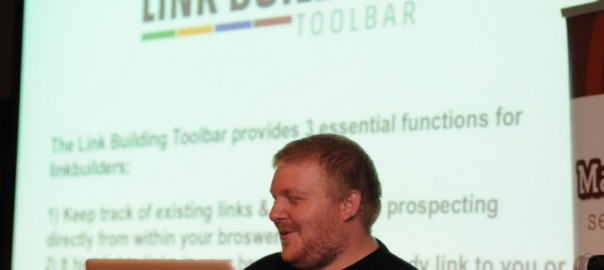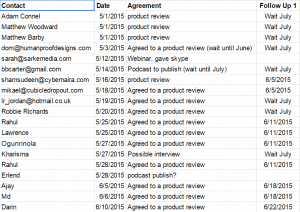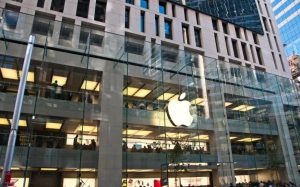
The game of branding is multi-episode. You do your best on each level to make your character win the quest and unlock new stories.
Branding techniques are your episodes: you master one and make it win to unlock more opportunities to use even more techniques that will help your brand stand out and slowly build a reputation. On solid foundations, too.
But you don’t need to brainstorm new way to get your brand name out there. If you know even just a bit of SEO, you have the game ‘cheat sheets’ at your feet– simply turn link building for SEO into branding techniques. Or combine the two.
What strategies can be repurposed for branding?
Here is a list of 12 ways to turn SEO techniques for backlinks into branding opportunities.
1. Brand Mentions
While not a direct link building strategy, SEOs know how to turn web mentions into links– something Neil Patel explains thoroughly in his QuickSprout guide.
What do you want to achieve with web mentions in relation to branding? Simply, you want to get as many as possible, turn some into links if you can get in touch with the webmaster (even nofollow links; see point #2 below) and keep the others as a way for users to learn about your brand and look you up on search engines.
2. Nofollow Links
Most webmasters and SEOs insist that nofollow links are useless because Google discounts them for search rankings.
While that might be true, it’s important to remind yourself of the meaning of a link– that is, to connect a certain document to another document on the Web, thus creating a meaningful relationship that helps the reader get an overall complete picture of the topic at hand.
That’s why nofollow links are great links for branding– while the Google search factor gets discounted, these links are great to raise awareness of your brand among website visitors, so you should by all means get as many nofollow links as possible.
The good news is that they are generally easy to get (webmasters don’t need to worry about Google penalties) and they don’t require any anchor text optimization. They exist for the human user and nothing else.
3. Social Media Shares
SEOs and bloggers use social media sharing to raise awareness of their content and get it commented, re-shared or linked to, but they also reach out to their target audience to help with or discuss common problems.
You can do the same by getting in touch with social media users who have the highest chances to turn into leads or to raise awareness of your brand as influencers within their communities.
4. Sponsorships
You may not seek sponsorships to gain backlinks for your search rankings, but your brand will benefit from getting your brand promoted in front of other bloggers’ and webmasters’ audiences.
Get in touch with website owners personally or through your marketing department when you want to request sponsored content.
5. Conversations
Conversations are webinar chats, forum discussions, and blog comments, as well as other media that require users to discuss topics on the platform.
You can work at your brand’s advantage by having yourself or someone in your marketing team participate in such conversations.
6. Outreach (Help)
The Web is a place to ask for help. You can find users post help tickets, social posts, and blog or forum entries about anywhere you stumble upon.
Your brand offers services or products in a specific niche, tailored to specific needs— look for users who need help in the area you offer services or products for, offer free advice and let them know about your product.
A SEO would try to get a backlink with this technique. As a brand, you want people to know your service or product is the solution they are looking for.
7. (Engaging) Content Creation
Edwin Dearborn from Power Branding Secrets explains how content creation can work to a brand’s advantage in terms of user interest and the growth of citation links:
“The key to building links organically for any ambitious brand is to create and distribute enaging content. I feel that the best content is video content, as by 2018, 84% of all content consumed online will be video content (Source: Cisco). The problem is two-fold. One, most brands do not have the technical know-how or internal, creative talent to develop on-point video content that will resonate with their target audience, be shared, and thus build links naturally. Second, too many brands do not have access to the funds to create such high-quality content. It is these two very barriers which gives the competive edge to the brand that does solve these two challenges.”
8. Image Links
David Leonhardt from THGM Ghostwriter Services shares advice on how to use images to combine SEO with branding:
“To me, the most obvious way to make SEO work for branding is to get as many image links as possible. I know that most links will not support images, such as contextual links, but some will. At that point, you can ask the website owner to add your logo or a picture of your product. The Web is visual and branding is at least partly visual, so why not?”
9. Define Your Brand On Search
David Leonhardt also suggests to “define your brand, and have inbound links include that definition. For instance if your honey distribution company is branding itself as the one that delivers the purest honey, make sure to get “pure” into a lot of the inbound links. Of course, it also really helps if you take the time to brand yourself with words people are searching for. “Pure honey” might or might not be a popular search phrase.”
10. Contests
Professional content marketer Christopher Jan Benitez recommends contests to spread the word about your brand and get backlinks at the same time:
“Launching a contest (raffles, in particular) is a great way to get your brand out in the open and gain links in the process. I would suggest running the contest campaign using Rafflecopter so the winner will be random. Prepare the prize to be given out that is in line with your audience (free ebook, whitepaper, services, products, etc.). Once the contest is set up, you can embed the raffle code on your Facebook page and blog post. Promote the post (email blast, social media sharing, etc.) to drive buzz to your contest. These should at least help you not only gain valuable backlinks,but also build an audience that you can sustain in the long run.”
Bonus: Visual Teasers & Infographics
Sunita Biddu suggests you go visual in your branding efforts:
Witty visual teasers, ideas and infographics win all the way. They are quick to understand and the presentation can make a mark in one’s brand and trust building faster than any other methods.
With over 2 billion content being shared everyday, it’s unrealistic to get your content noticed unless it’s outstanding. Visual can make its way easier than text. And since it’s noticed faster, it gets shared and linked back faster.
The only key is to make sure there is more graphic and lesser but sharp info. Pinterest itself can send thousands of traffic and links everyday for well designed visuals.
To conclude, it just works better for branding when the consistency, quality, color scheme, style and freuquency of visual production is taken care of. Visualize good ideas. They will find the way to take your brand to the next level.
What strategies do YOUR branding efforts involve?
Image credit: Steven Lilley (cc)
Digital & Social Articles on Business 2 Community(152)





